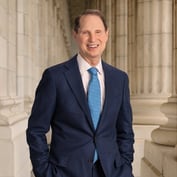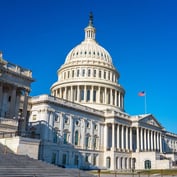Legislative and regulatory efforts that pose potentially serious threats to life insurance professionals, including Congressional action to address end-of-year deadlines and tax reforms that could circumscribe or eliminate the tax-favored treatment of life insurance, were front-and-center at a Legislative Forum held Monday during the second day of the National Association of Insurance And Financial Advisors (NAIFA’s) annual conference.
The advocacy briefing brought together NAIFA’s Government Relations Team, which provided updates on developments in Washington D.C. and in statehouses nationwide.
Danea Kehoe, an outside counsel with DBK Consulting, spoke of the impending “fiscal cliff:” the consequences of Congress failing to act by year-end on an estimated $7 to $10 trillion in federal spending and tax rules. Topping the list: the expiration on December 31 of the Bush tax cuts implemented in 2001 and extended in 2003.
Absent Congressional action, a reversion to the pre-2001 tax regime, combined with necessary fixes to the alternative minimum tax and tax extenders, will amount, said Kehoe, to a $4 trillion tax increase. Add to this figure other considerations that come with an end-of-year deadline.
Among them: $1.2 trillion in automatic spending cuts that are due to take effect on January 1; Congressional action on whether to extend federal, supplemental unemployment benefits and the current two-point cut in employees’ share of Social Security taxes; and an almost 30% cut in the rate by which Medicare reimburses doctors.
Kehoe flagged still other looming deadlines, including one in 2013 respecting the federal government’s debt ceiling limit, which will have to be raised to cover expenditures and interest on the national debt; and, within the next three weeks, a bill to prevent a government shut-down.
“It appears likely that Congress will pass a six-month spending bill in the next week or two, but there are no guarantees,” said Kehoe.
Observing a consensus among a economists, she added that a return to the pre-2001 tax rules, while reducing the federal budget deficit by about $7 trillion, would be too precipitous, sending the weak U.S. economy into recession or, potentially a “full-blown depression.”
For life insurance professionals and their clients, reimplementation of the old tax rules would be as significant. The top income tax rate and tax on dividends would return to 39.6%. And capital gains tax would rise to 20%.
“A higher tax rate on income could make the inside build-up of life insurance and annuities look more attractive,” said Kehoe. “But the higher estate tax rate and capital gains rate on mutual funds and other financial investment options are negatives for our clients.”
High on the list of concerns for NAIFA and the life insurance industry is House bill H.R. 6169, which mandates a tax reform plan by April 30, 2013.
Diane Boyle, vice president of Federal Government Relations for NAIFA, said that revenue-enhancing measures, such as the closing of tax loopholes and the elimination of “tax expenditures,” including potentially the tax-deferred treatment of cash value life insurance, will likely be among proposals contained in the plan. One reason: the need to close the burgeoning budget deficit and national debt, the latter of which now stands at $16 trillion–more than the U.S.’ current gross domestic product.
Republicans and Democrats, said Boyle, agree that tax reform must engender lower tax rates and a broadening of the tax base, but they disagree on the means by which these goals are attained. Republicans demand that taxes not be raised, whereas many Democrats don’t want to see cuts to mandatory entitlement programs.
To achieve consensus, said Boyle, the House and Senate might coalesce around proposals that, rather than eliminating the tax-favored treatment of the inside build-up of life insurance, limit the scope of the tax benefit. One possibility: eliminating tax-deferral for individuals whose income is above a certain level or who intend to use their policies for particular advanced planning applications.
“These proposals present challenges to our industry,” said Boyle. “We in the industry need to be able to communicate our concerns about them to Congress.
“You [NAIFA attendees] have to participate in this effort to preserve the 100 years of tax-favored treatment of life insurance,” she added. “We need 1,000 NAIFA members to go Capitol Hill on April 8 and 9, when we’ll be hosting a Congressional Conference, to make sure Congress knows how important the tax status of our products are.”
The importance that NAIFA’s leadership attaches to voicing the organization’s concerns on tax reform was echoed by NAIFA Assistant Vice President of Political Affairs Magenta Ishak.
“The current tax treatment of life insurance is so fundamental to the financial security of millions of Americans it can’t be overstated,” she said. “We absolutely have to ensure that Congress understands what’s important to us by delivering a unified message back home in our Congressional districts and on Capitol Hill. And we have to do this repeatedly.”








 September 12, 2012 at 05:40 AM
September 12, 2012 at 05:40 AM










